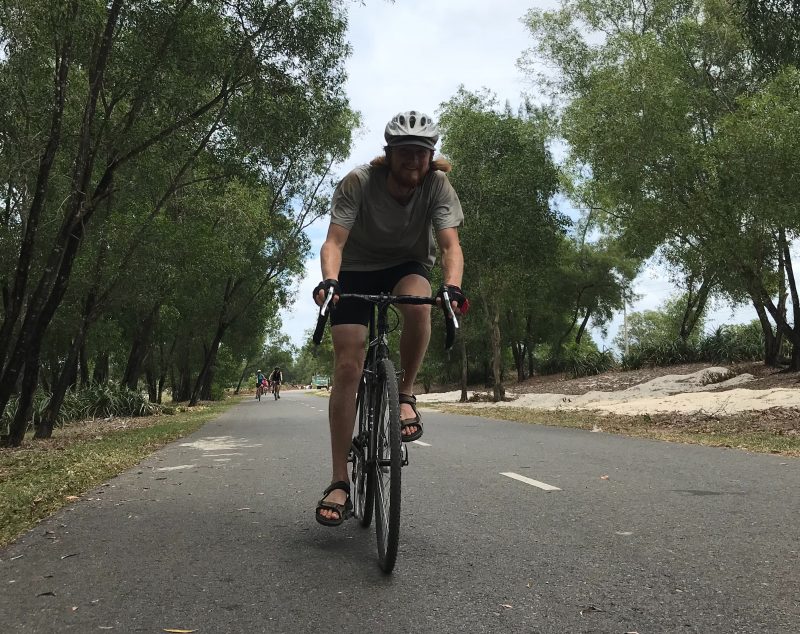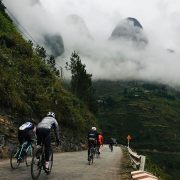Best muscle for cycle
The best-muscle-for-cycle relaxation technique for muscle relaxants

Muscular flexibility and flexibility are important if you want to improve performance during cycling. In addition to regular diet, muscle relaxation after each workout or competition, the muscle will quickly recover and avoid persistent pain. Check with Trisport International now to see the Summary of Best Stretch Exercises for Bicyclists.
1. RELEASE THE SINGLE ROOFING AREA (ILLIOTIBIOAL BAND)
The pelvic strip is a ligament located on the outer surface of the thigh that extends from the hip to the outside of the knee, connecting the pelvis to the tibia. Pyloric pelvic pain syndrome occurs when ligaments are bundled and inflamed, causing each time the force acts on the knee area during operation.
To find out if you have pelvic floor pain. On a flat surface, then bend your knees and use your hand to pull it to the chest area until the dorsal surface touches the surface of the table. If you have inflammation, you will feel pain at the outer surface of the knee.
To stretch this ligament as well as the surrounding muscle groups, you will need a sports roller (Cylinder). Lie on one side, place from the thigh area to the area of the knee of the leg that is hurting on the roller, the other leg is crossed and use the hand to balance the weight. The goal is to use your weight to stretch the affected leg area, roll up and down for 60 seconds then repeat the same with the other leg.
Relaxation of the pelvic region with platen
2. PREVIOUS STRENGTH (QUADRICEPS)
The anterior thigh muscle (Quads – Quadriceps) is also known as quadriceps muscle, consisting of three major major muscles (the inner thigh muscle has some other small muscles. This is one of the major and important muscle groups for biking, so it is necessary to heat up and stretch the muscles thoroughly, There are many ways to stretch this muscle group, but the two most effective ones are standing or stretching. Put one hand on the wall or chair, then hold the other hand and pull one leg until the thigh muscle is fully stretched, hold for 20 seconds then repeat with the other leg
For stretching, it is quite similar to standing posture, but a little different that you will lie on a flat surface, one hand relaxes on the floor and the other hand holds and pulls one heel toward the back until the area The front thigh muscles are fully stretched, hold for 20 seconds then repeat with the other leg
3. RELAXING THE MECHANICAL AREA:
Hip flexor (Hip Flexor) is a collection of muscle groups located in the pelvis, the femoral bone plays a role in helping the thigh muscles function and moving forward to the abdomen. If you have symptoms of pain in the area when giving up, pedal down is because you haven’t bent or widened the movement of the muscle group, causing the hip muscles to be pressed. Hip muscle pain will inhibit movement and reduce your cycling performance.
There are two ways for you to stretch this muscle area, Kneeling Lunge, and roll on the axis. For knee knocks, just lower your body, bend one leg up, the other leg straightens and then bring the hip area forward to maximize muscle relaxation.
Hip muscle relaxation in the position of kneeling on one leg
With the second move, place the buttock area on the platen and then roll up and down for 20 seconds.
Hip muscle relaxation in posture on the roller
4. RELAXING THE BAMBOO AREA:
Buttocks pain is a very common pain for bikers, the reason often comes from not adjusting the bike, sitting in the wrong position, the size is not suitable, or cycling using the thigh muscle area Many causes the gluteal muscle area to be pressed … Besides the hip muscles, the gluteal muscle is an important major muscle group in the cycle of cycling.
To relax the gluteal region, you can perform a sitting posture on one leg, the other leg bends horizontally about 45 degrees, pressing so that the ankles and knees reach to the ground, so that one side of the gluteal muscle is stretched. Stretch it all the way, hold for 20s then reverse it to the other side.
5. STROKING THE FOLLOWING GROUP (HAMSTRING):
One of the main reasons why you have pain in the back thigh muscle is that you are over-correcting, and pedal at a low rate when you are not used to it or increase and decelerate suddenly while your muscles are not adapted. If you are mild, you will have pain in the back of your thigh, which is worse and you will have a crack or tear in your muscles.
There are many movements that help relax this muscle area, but the simplest move is to lower your body until your fingertips touch your toes. Note that your back should be straight and fixed, when you slowly bend your body, you will feel that the back thighs are stretching, hold for 10-15 seconds.
Stretching the posterior thigh with bowing posture
6. RELAXING THE FOOTWEAR AREA:
With just one movement, you can stretch both the calf and the subacute area (Achilles Tendon). For Achilles Tendon, this is the tendon joint between the heel and the leg muscles. There are many complications of heel pain, but it is common to have sudden, throbbing pain, which feels like being beaten into the ligament, in some cases more severe than swollen or torn Achilles tendon. There are two main causes of heel injuries:Send feedbackHistorySavedCommunity
 Previous Post
Previous Post Next Post
Next Post